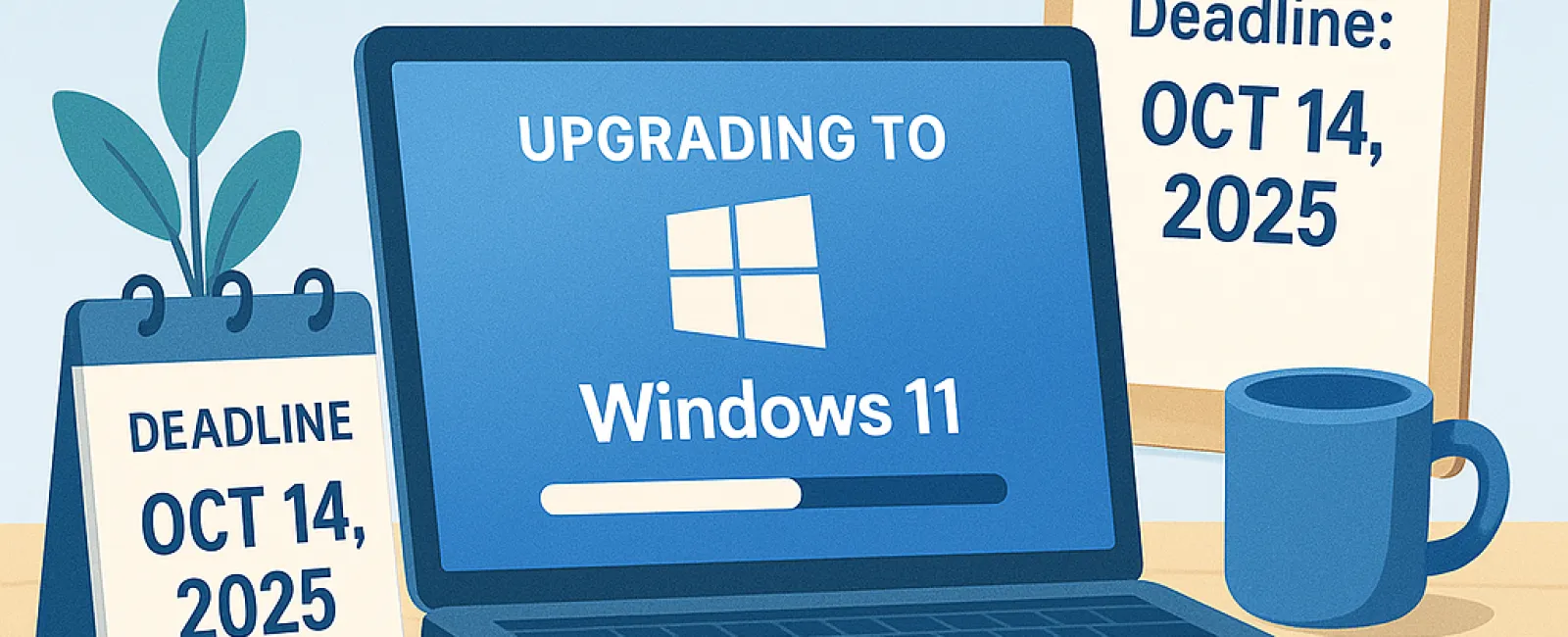June 23, 2025
If you are still using Windows 10 on your business machines, it's important to act now. On October 14, 2025, Microsoft will officially end support for Windows 10, which means no more security updates, bug fixes, or technical support.
The real issue for business owners is not just the need to upgrade eventually, but the risks and costs of delaying the upgrade in the meantime.
"We'll Deal With It Later" Is An Expensive Strategy
Upgrading all the machines in your business isn't an exciting expense, and it might seem easier to postpone—until something goes wrong. Here's what delaying actually costs you:
1. You're Operating Without A Safety Net
After Microsoft stops updating Windows 10, any new security vulnerabilities are your problem. Hackers target outdated systems because they are easier to exploit. It's like locking your front door but leaving the windows open. A security breach could cost you thousands or even threaten your entire business.
2. Software And Hardware Compatibility Issues
Many business applications such as accounting software, CRMs, and industry-specific tools are already phasing out support for Windows 10. If your system fails during an important project or client presentation, what would that cost you? This also applies to new hardware like printers and security tools that might not be compatible with an outdated operating system.
3. Lost Productivity
Older systems tend to be slower, crash more often, and frustrate your staff. Even minor delays add up, reducing efficiency, morale, and your competitive edge. If each employee wastes 10 to 15 minutes a day on tech issues, the cumulative loss over a month can be substantial.
4. Emergency Upgrades Are Always More Expensive
Waiting until systems fail or your team can't access their machines causes stress and forces you into panic mode. This can lead to costly emergency hardware purchases, overtime IT labor fees, and business interruptions while equipment is replaced. Planning ahead now saves you from scrambling and spending more later.
5. You're Risking Compliance Violations
If your business handles sensitive information or follows regulations like HIPAA or PCI-DSS, using unsupported systems could result in fines or legal trouble. Most regulations require up-to-date security measures, and Windows 10 will no longer meet these standards after October 2025.
What Smart Business Owners Are Doing Now
They are preparing early, not just upgrading devices but also:
- Auditing which devices need replacement
- Streamlining tools and software
- Enhancing cybersecurity protections
- Planning IT budgets more effectively for 2025
How To Make The Transition Smooth
We recommend:
- Running a compatibility check to see which machines can support Windows 11
- Auditing your essential apps to confirm they work on Windows 11 or newer systems
- Budgeting for new hardware now to avoid supply chain issues
- Partnering with an IT provider to manage the transition smoothly with no downtime or surprises
Don't Wait Until October To Panic
Delaying the upgrade will cost more in money, stress, and lost opportunities. We help small businesses make this upgrade the smart way—planned, hassle-free, and ready to support growth.
Click here or call us at 720-449-3379 to book your 15-Minute Discovery Call and we'll help you identify what
needs upgrading, what can stay and how to build a transition plan that won't
disrupt your business before the deadline.




